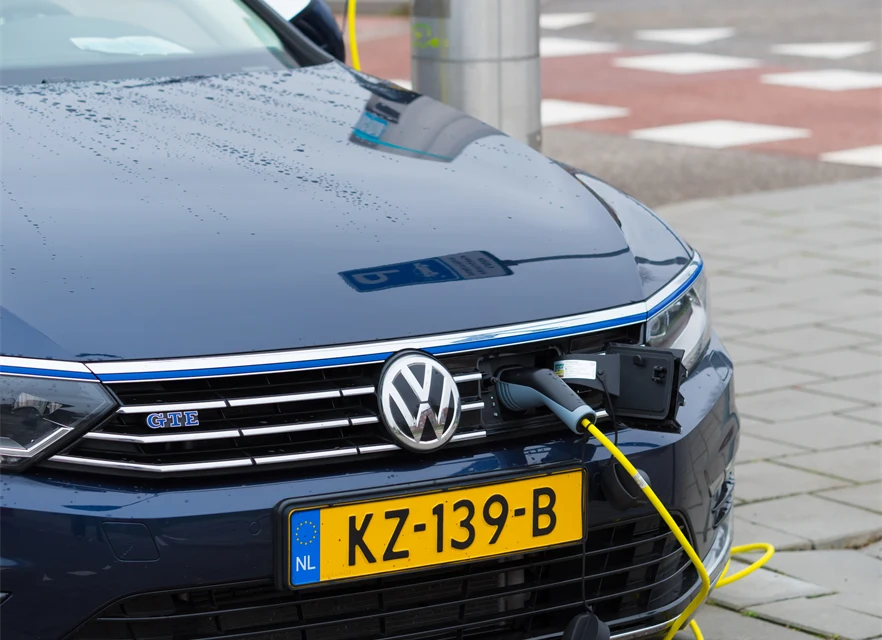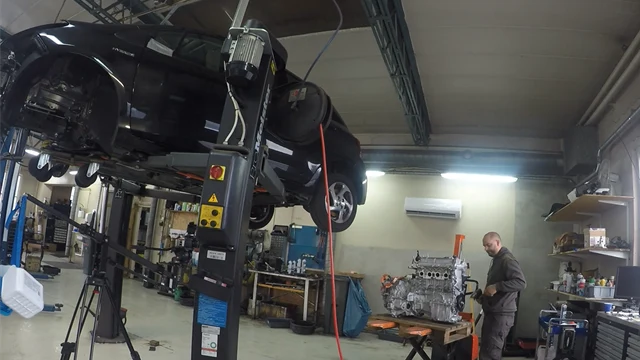
As a commuter car, it can operate as a battery electric vehicle (BEV) for a larger customer base. Unlike the Yaris that would just roll a few meters in electric mode before the combustion engine would kick in. The Passat is also a very technologically advanced vehicle, with a 7-speed dual clutch gearbox paired with an electric motor and a 1.4-liter TSI engine.
The VW Passat GTE was a difficult car to purchase. We got one of the first, but when the state incentives for PHEVs changed, due to changes in the testing cycle from NEDC to WLTP, automakers in Europe pulled many PHEVs off the market. The change from measuring in NEDC to WLTP resulted in many PHEV vehicles failing to show the required numbers, where carbon dioxide values needed to be less than 50 grams/km. As a result such vehicles lost their state incentives, making them expensive to buy and difficult to sell. The Passat GTE is about to make its second debut in Europe after being gone for more than a year.
However, let us get back to the teardown performed at a local workshop in Höganäs, Sweden. We had two mechanics doing the actual job of tearing down the vehicle and a team of four working on the documentation of all the parts. It is a lot faster to pull the car apart than it is to document the parts, but all together, the teardown and build up (for any of the three vehicles) was around two weeks.
Overall, the time taken to teardown the Toyota was far less than the time it took to teardown the VW Passat. One observation that we made was the amount of extra equipment needed in adding the E-mobility to the vehicle. There has to be an extra cooling system for the battery, with fluid, pump and radiator. In addition, the Electric motor needs its own separate cooling system for the E-drive and another for the combustion engine. Resulting in three independent cooling systems compared to one in a regular car. If we were to add an oil-cooling system, which is present in most cars, there would be four different cooling systems.
Since I like to renovate old Porsche cars, I know everything about digging around amongst old crusty coolant hoses that leak if touched and electrical connectors and cables that once were soft and pliant, but now after 30 years of use, have turned into brittle-heat-transformed-plastic-fear, not to mention the old fuel lines… I wonder about the day when some hobby mechanic will have to deal with all this when the VW Passat GTE is 30 years old and falls apart as soon as it is touched. Sometimes less is more.
So, are there Powder Metallurgy (PM) opportunities in these systems? Technically, yes but it is all cost driven and that is where the PM industry has to get to work. Technically, it is no problem for PM regarding the pumps, fittings and radiators, these are all old technology, but the cost and weight are the drivers.
In the Passat GTE, we found some other interesting pieces of information. The variable-valve-train–actuator-stator and rotor all made in aluminum! A part normally made in the millions and in Metal Powder! So why change to aluminum? In addition, the engine head does not have the traditional camshaft bearing caps, but rather an integrated cam assembly into the head. Making it a non-serviceable unit. If the cam wears out at some point in time, the whole head would need replacing. Also missing were the cam-bearing caps, a typical PM part.
We did find some pulleys and oil pump parts made in sinter. In total, we found 4.2 kg of PM parts, which for a modern E-class car is not a whole lot, and this was concerning. This was now the second vehicle we had torn down only to find a few pieces of PM in it. We were starting to wonder if we had selected cars made by PM averse manufacturers! What was going on? We were not even close to the numbers that you would find online googling “PM content in cars.”
Putting the car back together was a story of its own. About 6000 error codes showed up on the ODB port, which is normal and usually related to a few different problems that should disappear once you reset the computer and codes with a scanning tool. However, not the case this time. The car refused to move, and refused to go into gear. We got all the king´s horses and all the king´s men to put this VW back together again, but to no avail. Everyone, except Angela Merkel, looked at the vehicle and yet no one could get it to work. Maybe it would have run if we had spent another cartload of money on a new gearbox, but there were no guarantees, illustrating the complexity of the system and what awaits the home mechanics of the future.
The Toyota (Yaris) system, based on a TRW patent, is much simpler and more ingenious than that of the VW Passat GTE. If you were to ask me, the VW system is a technological marvel, but so complex you can´t figure out what is wrong when it fails. However, if I were to choose between these two cars, I would take the VW Passat. If I had to fix either of the vehicles myself, I would go with the Toyota, because everyone knows you never have to fix a Toyota.
In the next part, I will look into the Ford F150, which is the final vehicle that we disassembled in this project and I will share some of the findings.



